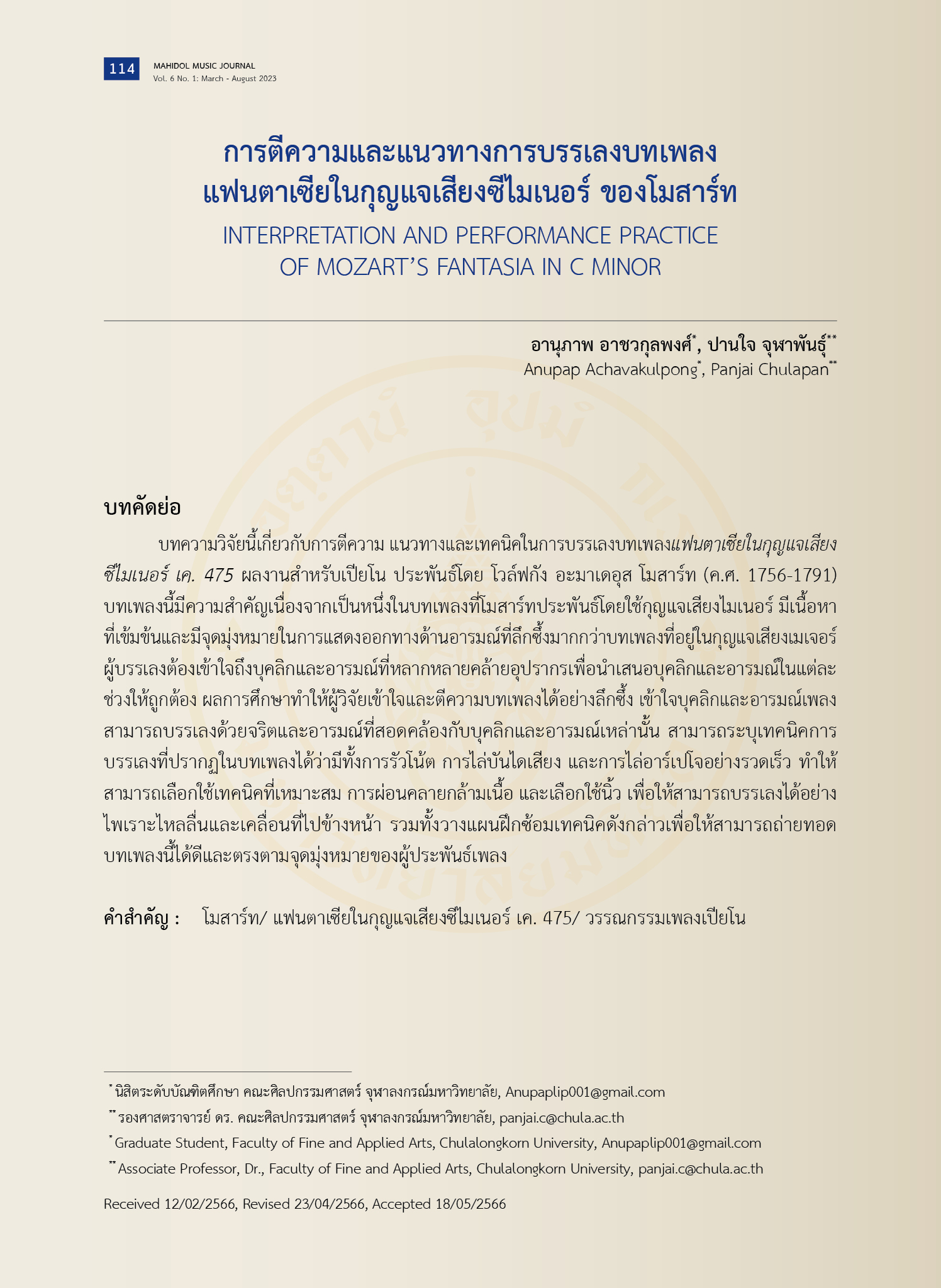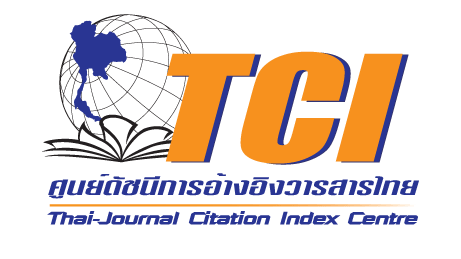INTERPRETATION AND PERFORMANCE PRACTICE OF MOZART’S FANTASIA IN C MINOR
Keywords:
Mozart, Fantasia in C minor, K. 475, Piano LiteratureAbstract
This research article involves interpretation and performance practice of Fantasia in C minor, K. 475 by Wolfgang Amadeus Mozart (1756-1791). The Fantasia in C minor is important since it is one of Mozart's few compositions in minor keys and, therefore, is more intense and aims to express deeper emotions than those in major keys. The pianist should realize various personalities and moods similar to that of an opera in order to present them accordingly. The results of the research enable the researcher to understand and be able to interpret the piece in depth, and can identify the playing technique in the piece including tremolos, scales and arpeggios. Consequently, the researcher can choose suitable playing techniques, use muscle relaxation, and consider proper fingerings to achieve beautiful and fluent performance. The researcher also focusses on executing proper techniques to convey the composition well through his performance and also to meet the composer’s purpose.
References
Bogunović, Blanka, Ivana Perković Radak, and Tijana Popović Mladjenović. "W. A. Mozart's Phantasie in C minor, K. 475: The Pillars of Musical Structure and Emotional Response." Journal of Interdisciplinary Music Studies 3, no. 1 & 2 (Spring/Fall 2009): 95-117.
Chulapan, Panjai. Piano Literature 1. Bangkok: Chulalongkorn University Printing House, 2008. (in Thai)
Muktarakosa, Tawee. The World's Great Composers. Bangkok: Prae Pittaya, 1964. (in Thai)
Ogata, Mikako. "History of the Performance Practice of Mozart's Fantasie and Sonata K. 475/457." D.M.A. diss., University of New York, 2012.
Pancharoen, Natchar. Form and Analysis. Bangkok: Chulalongkorn University Printing House, 2020. (in Thai)
Pancharoen, Natchar. Music Dictionary. Bangkok: Katecarat, 2009. (in Thai)

Downloads
Published
How to Cite
Issue
Section
License
Copyright (c) 2023 College of Music

This work is licensed under a Creative Commons Attribution-NonCommercial-NoDerivatives 4.0 International License.
The copyright of the article belongs to the author. Published articles represent the views of the authors. The editorial team neither necessarily agree with nor take any responsibility for the article.





